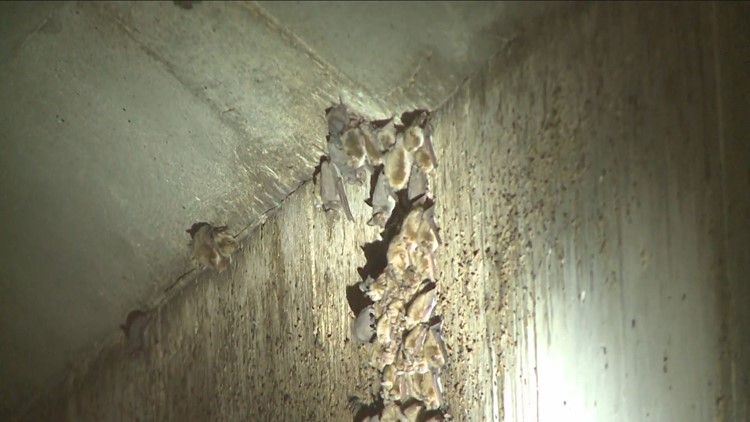MOHAVE COUNTY, Ariz. — Arizona's bats need the public's help in staying safe from a deadly type of fungus that has recently been detected in a few local species.
The Arizona Game and Fish Department has recently put out an advisory for residents to be on the lookout for sick or dead bats that may have come into contact with a lethal fungus.
Earlier this year, researchers came across seven species of bats in California and northern Arizona that had traces of Pseudogymnoascus destructans, a fungus known to cause white-nose syndrome in bats.
This illness can spread quickly between bats during their hibernation period, causing large populations to die off in a short amount of time.
Though researchers have not definitively concluded that the fungus is abundantly present among Arizona's bat colonies, the Game and Fish Department is recommending the state be more vigilant about observing how bats behave in the coming months.
"Federal and state agencies are asking the public to report any sick or dead bats found on the landscape," the agency said. "Sick or dying bats observed during winter may be a sign of WNS and can lead scientists to important roosting locations."
AZGFD said residents can protect bats by staying out of closed caves, old mine adits, and other areas used by bats. Climbers and cave dwellers should decontaminate their gear and other equipment used in areas where bats are known to live.
An outbreak of white-nose syndrome in Arizona could be catastrophic to the local environment, the agency added, and devastate the state's population of bats.
"Bats are essential for healthy ecosystems and contribute at least $3 billion annually to the U.S. agriculture economy through pest control and pollination," AZGFD said. "White-nose syndrome has killed millions of bats in North America – with mortality rates of up to 100 percent observed at some colonies."
Reports of sick bats found in the wild can be sent to bats@azgfd.gov.



